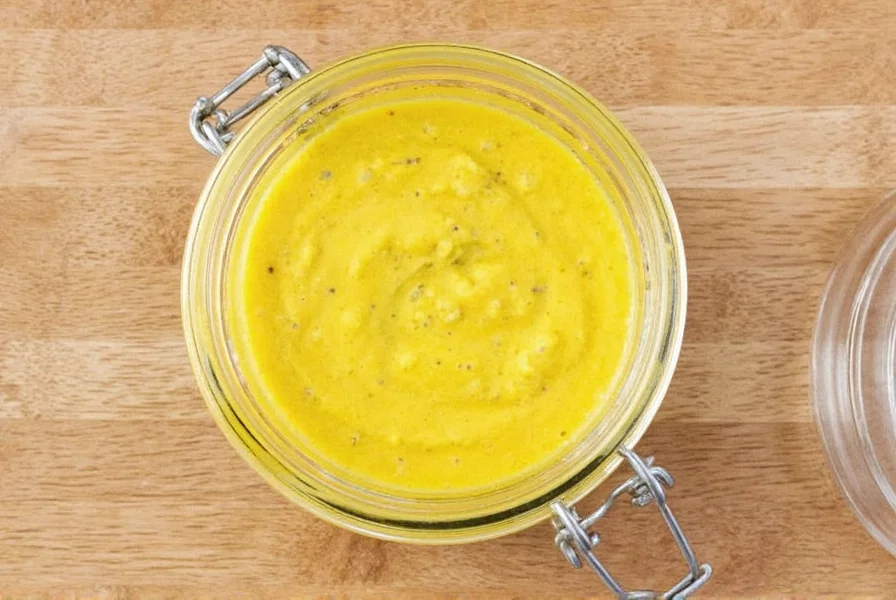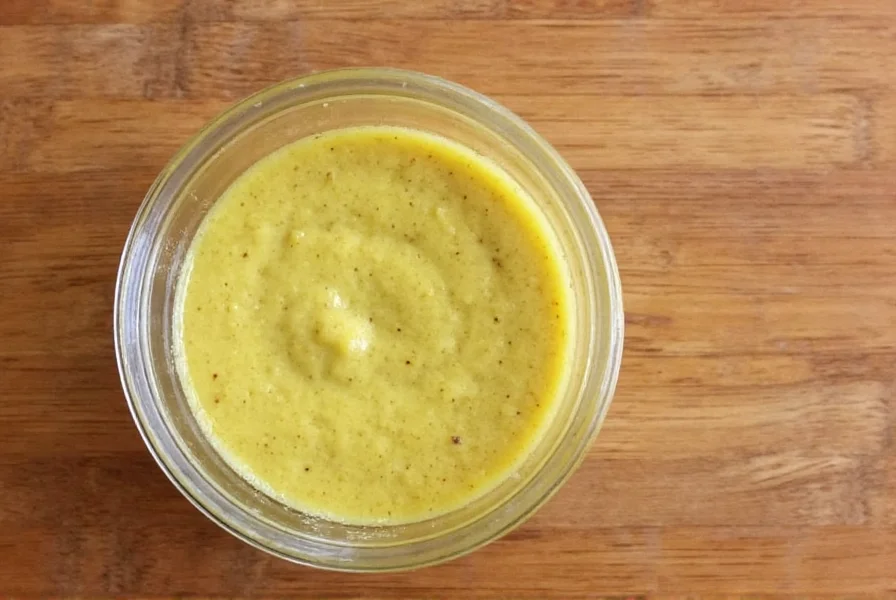Making mustard at home is simpler than most people realize and allows you to customize flavors to your exact preferences. Unlike store-bought versions filled with preservatives, homemade mustard offers pure, vibrant flavor with just a handful of ingredients. Whether you're crafting classic yellow mustard for hot dogs or sophisticated Dijon for gourmet sauces, the process remains fundamentally the same with minor variations.
Essential Mustard Ingredients Explained
Understanding each component helps you create perfect mustard every time. The magic happens through a chemical reaction when mustard seeds meet liquid.
| Ingredient | Function | Common Options |
|---|---|---|
| Mustard Seeds | Base flavor and texture | Yellow (mild), Brown (spicy), Black (strongest) |
| Liquid | Activates enzymes, controls heat | Vinegar (tangy), Wine (complex), Water (mild) |
| Salt | Enhances flavor, preserves | Sea salt, Kosher salt |
| Sweeteners (optional) | Balances acidity | Honey, Sugar, Maple syrup |
Step-by-Step Basic Mustard Recipe
This foolproof method creates classic yellow mustard in under 20 minutes. For best results, use a high-powered blender or food processor.
- Measure ingredients: Combine 1/4 cup yellow mustard seeds, 1/2 cup liquid (water or vinegar), 1 tsp salt, and 1 tbsp sweetener (optional) in a bowl
- Rest period: Let the mixture sit for 10-15 minutes to allow enzymes to activate (this develops the characteristic mustard heat)
- Blend: Transfer to blender and process until smooth, scraping sides as needed
- Adjust consistency: Add more liquid 1 tsp at a time if too thick
- Flavor development: Transfer to jar and let sit at room temperature for 24-48 hours before using (flavor intensifies over time)
Popular Mustard Variations to Try
Once you master the basic technique, experiment with these delicious variations that answer common searches like how to make Dijon mustard at home or easy whole grain mustard recipe.
Dijon-Style Mustard
Replace water with dry white wine and use brown mustard seeds. Add 1 minced garlic clove and 1/4 tsp turmeric for authentic flavor. The wine creates a smoother, more complex profile that's perfect for homemade mustard for salad dressings.
Whole Grain Mustard
Use a combination of yellow and brown seeds, reserving 2 tbsp seeds to add after blending. This creates the signature texture people search for when looking for how to make coarse mustard. Add 1 tsp chopped fresh herbs like tarragon for gourmet appeal.
Honey Mustard
Increase sweetener to 2 tbsp honey and use apple cider vinegar. This version satisfies those searching for easy honey mustard recipe without mayo. The natural sweetness balances the sharpness perfectly for dipping sauces.
Troubleshooting Common Mustard Problems
Even experienced home chefs encounter issues when learning how to make mustard from scratch. Here's how to fix them:
- Mustard too sharp: The heat level decreases over time. Let it sit 3-5 days before using. Adding sweetener or more liquid also reduces intensity.
- Too thick consistency: Gradually add liquid 1 tsp at a time while blending. Different seeds absorb liquid at varying rates.
- Lacks flavor depth: Ensure you allow the 10-15 minute rest period before blending. This activates the enzymes that create mustard's signature bite.
- Separation occurs: This is normal. Simply stir well before using. For emulsified texture, blend longer or add 1/4 tsp xanthan gum.
Storage Guidelines for Homemade Mustard
Understanding how long does homemade mustard last is crucial for food safety. Properly stored:
- Refrigerator: 2-3 months in airtight container
- Room temperature: 1-2 weeks (only if using vinegar as primary liquid)
- Freezer: Up to 6 months (thaw in refrigerator before use)
Always use clean utensils when handling to prevent contamination. The flavor continues developing for up to 2 weeks after preparation, so many chefs recommend waiting before serving for optimal taste when making mustard for special occasions.
Why Homemade Beats Store-Bought
Crafting your own mustard solves common frustrations with commercial products. You control the ingredients, avoiding preservatives and artificial colors that concern health-conscious cooks searching for how to make natural mustard. The flavor complexity surpasses anything you'll find in jars, with fresh, vibrant notes that elevate sandwiches, marinades, and sauces. Plus, homemade mustard makes thoughtful gifts when presented in decorative jars - perfect for those researching how to make mustard as gifts.

Frequently Asked Questions
How long does it take for homemade mustard to develop flavor?
Mustard reaches its full flavor potential after 24-48 hours of resting. The enzymatic reaction continues developing complexity for up to 2 weeks. While edible immediately, waiting 2 days significantly improves taste and reduces initial harshness.
Can I make mustard without a blender?
Yes, you can make mustard using a mortar and pestle. Soak seeds for 4-6 hours, then grind gradually adding liquid. This traditional method produces excellent texture but requires more effort. Many artisanal producers still use this technique when crafting small batches of how to make stone ground mustard.
Why does my homemade mustard taste different each time?
Mustard flavor varies based on seed freshness, liquid acidity, and resting time. Seeds lose potency over time - use within 6 months of purchase. Vinegar pH affects enzyme activity, and temperature impacts reaction speed. For consistent results when making reliable homemade mustard, measure ingredients precisely and maintain consistent preparation conditions.
Is homemade mustard safe without preservatives?
Yes, when properly made with adequate acidity (vinegar or wine) and stored refrigerated, homemade mustard is safe for 2-3 months. The low pH environment prevents bacterial growth. Mustard's natural antibacterial properties from the seeds themselves also contribute to its shelf stability, addressing concerns in how to make safe homemade mustard queries.











 浙公网安备
33010002000092号
浙公网安备
33010002000092号 浙B2-20120091-4
浙B2-20120091-4